Push Up Exercise
Table of Contents
What is a push-up exercise?
- Push-up exercise is a classic exercise that is done in a prone position by raising and lowering the body with the straightening and bending of the arms while keeping the spine straight and supporting your body on the hands and toes.
- Push-up exercise is a basic exercise for upper body strength and the chest.
- Push-up exercise will improve your health by making your muscle stronger, helping to improve your metabolic rate to burn fat, and providing cardiovascular support.
- This is a common calisthenics exercise that begins with a prone position, by elevating and lowering the body by singing hands, this exercise mainly focused on your pectoral muscles, triceps, and anterior deltoids, with many benefits to the rest of the deltoids, serratus anterior, coracobrachialis muscles.
- This push-up exercise very fast and effective exercise for building muscle strength.
- When you correctly perform this exercise then this exercise helps to strengthen the lower back and abdomen.
- You also perform this exercise as a part of your body weight exercise session and a circuit training workout.
- Push-ups do not need any kind of equipment.
Which muscle is used in push-up exercises?
- Upper limb muscles
- Primary muscles:
- Triceps and biceps, Pectoral (chest) muscles, Shoulder girdle muscles, Latissimus dorsi muscles
- Secondary muscles:
- Abdominal muscles (stomach) , Hips muscles, Leg muscles
Health benefits of doing a push-up exercise:
The followings are the health benefits of doing this exercise:
- Helps to Improve Upper-Body Strength.
- Helps to improve your cardiovascular endurance.
- Helps to Burn calories.
- Helps to guard your shoulders and lower back from injuries.
- Helps to Improve your balance.
- Helps to Improve your balance posture.
- Helps to Improve your flexibility.
- Helps to improve your performance in sports activities.
- This exercise Work Out Multiple Groups at One time.
- This exercise will be Easily Modifiable.
- This exercise does not need any Equipment.
- This is also advantageous for Your Core muscle.
- Push up is a Functional Exercise.
- Help to Strengthen Your Bones.
- Help to improve your cardiovascular health.
- Helps to decrease Osteoporosis Development.
- This exercise helps you sleep better.
How to Do a Push-Up exercise?
Basic push up:
- For this exercise, you have to get on the floor on all four limbs and place your hands wider than your shoulder.
- Do not lock your elbows. keep them slightly bending position.
- Straighten your legs at the back so you are balanced on your hands and toes, your foot hip-width apart.
- Engage your abdominal muscles and tighten your core muscle by pulling your tummy toward the spine.
- Breathe in as you slowly bend your elbows and lower yourself to the floor, until your elbows are bent to a ninety-degree angle.
- Breathe out by contracting your chest muscles and pushing back up through your hands, back to the initial position.
- Keep contracting your core muscles throughout the movement, also keep your body straight.
- There have no such limits for doing push-ups you can do them with your comfort. you also do 100-200 push-ups in a day.
- The average person performs 50 to 100 push-ups in a day with 25 repetitions of 3 sets.
How to perform the basic push-up properly video:
There have eight Variations of a Push-Up exercise, which you can perform at home:
- If you are a beginner and you need to make this exercise much easier, or want more of a challenge—or want to better target a most specific muscle—then there is a push-up variation for you.
Bent-Knee Push-Up:
- This is a modified variation of the basic push-up done on the knees rather than on the toes. Make sure that the knees, hips, and shoulders are all in the same line. Do not permit yourself to bend from the hips.
- For this exercise you have to begin with a quadruped position you have to come on four limbs, then extend the arms and put your shoulder and hands width apart on the floor in front of you.
- Tighten your abdominals when you bend your arms, lowering your trunk until your eyes are completely seen on the floor.
- Push the spine back up by straightening your arms.
- Complete 3 to 4 sets of 17 to 20 repetitions.
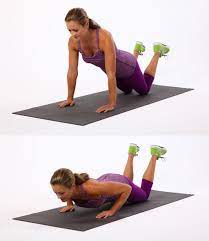
Incline push-up exercise:
- If you want to make this exercise easier then go for this variation, for this exercise you need one bench, and you have to stand some distance feet away from the bench.
- Place your hands on a table then use the same basic push-ups technique to complete this variation.
- lower down your body by bending your elbow 90 degrees then lift back up to the initial position.
- Complete 3 to 4 sets of 17 to 20 repetitions.

Stability-Ball Push-Up exercise:
- Before starting this exercise you have to do 18-20 basic push-ups.
- For this exercise you have to take a kneeling position in front of the ball, keeping your trunk and hips straight aligned while doing the exercise.
- Now Push your body upward side until your both arms are almost straight (do not lock your elbows).
- Maintain this position and balance in this for two to three seconds.
- Then slowly return to the beginning position and repeat this movement again.
- Complete 3 to 4 sets of 17 to 20 repetitions.
Decline push-up exercises:
- This exercise is more difficult than a basic push-up, for this variation you need one bench or box.
- Do push-ups with feet elevated on a box or bench.
- You can adjust the bench’s height to increase or decrease the resistance using just your body weight.
- Take Kneel with your back to the bench. Rest your hands on the floor, shoulders over your wrists, and elbows at 45 degrees.
- Place your feet on top of the bench.
- Use your core, glutes, and quadriceps muscles. then Bend your elbows and lower your chest to the floor keeping your back and neck straight.
- Push into the floor to back to the starting position, by extending your elbows.
- Complete 3 to 4 sets of 17 to 20 repetitions.
Clapping push-up exercise:
- For this exercise, you have to take a position of standard push-ups, and get into an arm support position with your hand’s position underneath your shoulder and fingers.
- Then lower your body until your chest is just above the floor.
- Bend elbows to start the first part of the push-ups. your elbow should be placed close to the body.
- Start in a standard push-up position.
- Get into an arm-supported position with your hands positioned underneath your shoulders and fingers spread slightly.
- Complete 3 to 4 sets of 17 to 20 repetitions.
Diamond push-ups:
- This variation of push-ups mainly targets the triceps muscle.
- This is performed with your hands close together and the index fingers and thumbs of one hand touching another hand, making a diamond shape on the floor.
- Then you will perform push-ups with your hands touching the center of your chest and elbows close to the sides of your body during every repetition.
- Complete 3 to 4 sets of 17 to 20 repetitions.
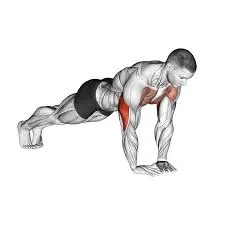
Push-Up With Lat Row:
- For this variation, you need dumbbells. this variation increases the intensity of the exercise, by activating core muscle and engaging the latissimus dorsi.
- For doing this exercise you need to do basic push-ups with free hands, then by holding dumbbells by pushing a floor with one hand, at top of the movement pull the weight towards your chest by bending one elbow with holding a dumbbell.
- Do this movement on another hand.
- Complete 3 to 4 sets of 17 to 20 repetitions.
Medicine Ball Push-Up:
- For this variation, you need a medicine ball.
- You have to first get into a basic push-up position with your left hand over the medicine ball and your right hand over the floor.
- Lower down your chest towards the ground, and then press upside, if you want a more challenging variation in this you can also do it with rolling medicine balls, in a different range of motion which will improve the stability of the shoulder and balance also.
- Do 4 to 5 sets of 5 to 10 repetitions.
Superman Push-up exercise:
- This is an advanced and difficult variation of push-ups.
- For beginners, we suggest you first take your hand off the ground when doing push-ups, then only you have to raise your leg and come into the push-ups position.
- Then both hands and legs off the ground and then come into push-ups position and again hands and legs off the floor.
- Do 4 to 5 sets of 5 to 10 repetitions.
Staggered Push-up:
- There has another different type of pushup you can add to your workout training is the staggered pushup.
- This variation includes getting
- yourself into the basic pushup position.
- In this push ups variation, you have to change your hand position.
- The left hand should be placed higher than the right hand, which should still remain in the same line as the shoulder.
- While performing push-ups you have to take your above and then into the basic push-ups position then another hand at a higher level do push-ups.
- This variation improves individual side strength.
- Complete 3 to 4 sets of 17 to 20 repetitions.
Wide Arm Push-up:
- For this exercise, you have to begin in a plank position with your hands out broader than your shoulder joint.
- Begin with lowering your body by bending your elbows, keep your core muscle tightening and your back should be straight until your chest grazes the floor.
- Elbows will spread more than in a basic pushup.
- Immediately straighten your elbows and push your body back upward.
- If you want to engage your chest and front shoulders addiction, then try the wide grip.
- It is the same as a basic pushup but your arms position is further apart.
- This means that your elbows will bend slightly more when you are lowering your body to the ground.
- When it comes to pushup variations, the more wide apart your hands are, the more you will work for your chest.
- This variation is more aimed at the pectoral muscle than basic push-ups.
- Complete 3 to 4 sets of 17 to 20 repetitions.
Wall push-ups:
Basic wall push-ups:
- You have to Stand close wall at arm’s length from the wall with your feet and hip-width apart.
- Put both hands on the wall at shoulder-level height and shoulder-width apart, with your fingers pointed toward the ceiling.
- If you feel you are reaching too far, move your feet nearer to the wall.
- Now Slowly bend your elbows and start to lean your body toward the wall until your nose almost touches it.
- Keep your spine straight and elbows bending at around a 45-degree angle (instead of straight to the sides).
- Slowly push back to the initial position.
- Complete 2 to 4 sets of 17 to 20 repetitions.
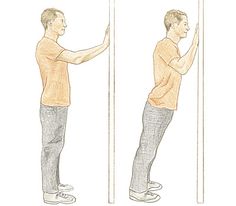
How to perform basic wall push up properly:
If you want to increase the difficulty level in your push-ups then go for the below variations. wall push-ups have many variations few are explained below you can try them.
Close hands wall pushup:
- In this variation, you have to put your hand wide apart.
- You have to move your palms toward the midline of the body.
- This will aim your triceps and pectoral muscles and be more challenging than basic wall pushups.
- Get into the position with your feet and legs together, standing about arm’s length from the wall with your arms straight out in front of your body.
- Your palms should be on the wall at about shoulder height, but this time, both hands touch each other, with your fingers pointing towards the roof.
- Now bend your elbows. your nose almost touches the wall. your back should be straight. then return to the initial position.
- Complete 2 to 4 sets of 17 to 20 repetitions.
One-arm wall pushup:
- When you mastered basic wall push-ups and completed multiple repetitions.
- After that, you have to go for this one-arm pushup progression. It is a unilateral type of pushup, meaning it works one side of your body at one time.
- This variation of push-up exercise helps even out strength imbalances, and it gives your core a good challenge.
- Get into the position with your feet and legs together, standing about an arm’s length from the wall with your one arm straight out in front of your body.
- Your one palm should be on the wall at about shoulder height, but this time with your fingers pointing towards the roof.
- Now bend your elbows. your nose almost touches the wall. your back should be straight. then return to the initial position.
- Repeat on another side.
- Complete 2 to 4 sets of 17 to 20 repetitions.
One-leg wall pushup:
- Assume the beginning position with your feet and legs together, standing about arm’s length from the wall with your arms straight out in front of your body.
- Place your palms on the wall at about shoulder height, but this time, with your fingers pointing towards the roof.
- Move your feet nearer to the wall, raise one leg off the floor behind you, now bend your elbows around 45 degrees.
- Your nose almost touches the wall. your back should be straight. then return to the initial position.
- Complete 2 to 4 sets of 17 to 20 repetitions.
Feet on the wall pushup:
- This is an advanced variation, which requires strength and balance.
- For this exercise, you have to take a plank position on the ground with your feet touch to the wall.
- Walk on your feet up toward the wall until you reach a comfortable height.
- This can be parallel to the floor or above your body height.
- This is your initial position. now bend your elbows around 45 degrees.
- Your nose almost touches the ground. your back should be straight.
- Then return to the initial position.
- Complete 2 to 4 sets of 17 to 20 repetitions.
Common Mistakes occur while performing push-ups:
Sagging in the Middle
For preventing this you have to begin with a plank .when you master the plank then go for push-ups to maintain a body in straight alignment.
Improper Neck Alignment
Your neck should be in a neutral position throughout the movement, the head in a straight aligned with the trunk, eyes towards the floor, and the top of your head pointed away from your foot. when you move your chin up or down your head so much that you can see your foot, it means you are out of alignment.
Locked Elbows
Locking your elbows at the top of push-up exercise is a mistake you might make by feeling fatigued and needing a little rest. But this puts too much stress on your joints and can cause strain or injury. Always keep a slight bend in the elbows. when you feel fatigued then you have to take a rest before performing the next set.
Hands Too Far Forward
When you put your hands far out than your shoulders you are placing more strain on your shoulders.
Limited Range of Motion
If you are only going down partially with your push-ups, you aren’t getting the full benefit. It is better to do an easier modification (such as knee or incline push-ups) that you can do with the full range of motion.
When you do not do push-ups?
- If you have a shoulder injury
- If you have a wrist injury
- If you have an elbow injury
- If you feel any kind of pain in your shoulder during exercise
- If you have already suffered from pain
- If your doctor suggested you take a rest
FAQ:
The pectoralis major is the biggest muscle of the chest muscles. It works as the prime mover when performing a push-up. The muscle consists of two heads.
Capristo suggests adding push-ups into your workout routine between two and three times a week, each time performing three sets of 8 to 10 push-ups. If you are not able to do a full, traditional push-up with good form, start with modified push-ups.
Slower push-ups put more strain on your muscles (more time under tension) and help you focus on form, thereby increasing muscle mass and strength. Faster pushups make it more of an aerobic exercise and will help you gain endurance and explosive power
Hold for 8-10s and continue for desired reps.

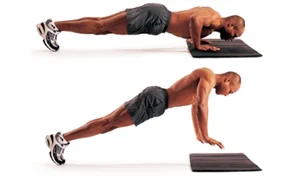
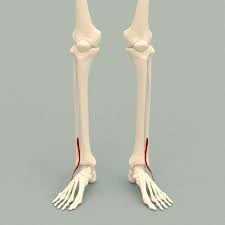


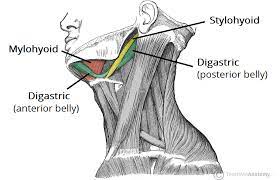


One Comment